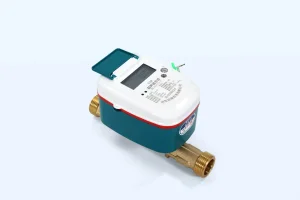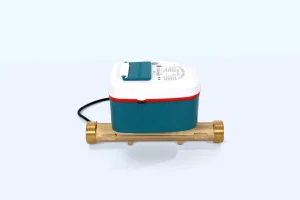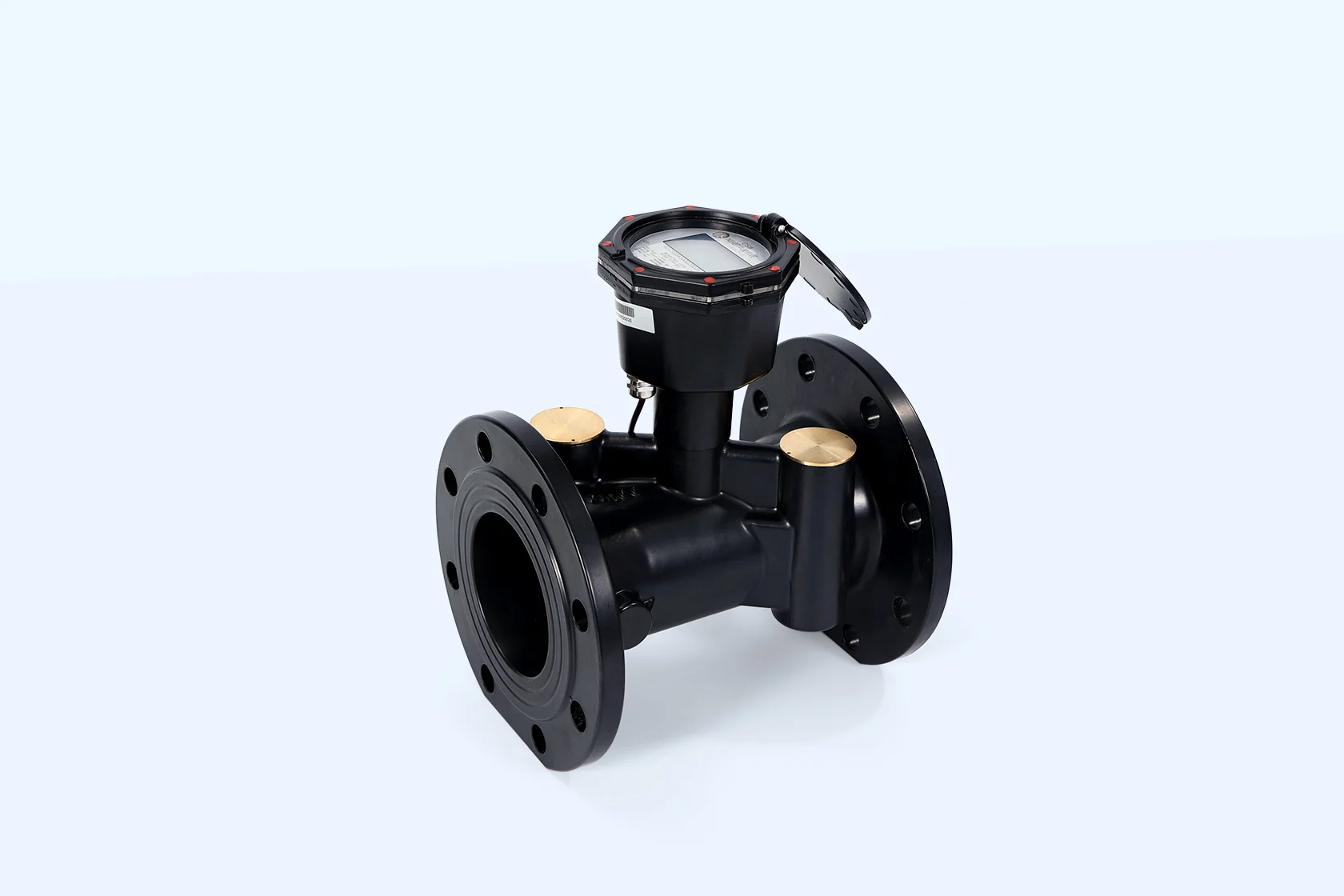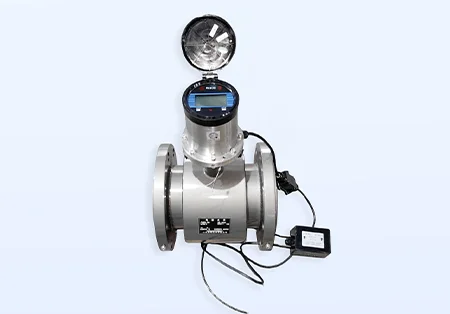
Imagínese que gestiona una bulliciosa red de agua urbana o supervisa una planta industrial donde cada gota cuenta. Se enfrenta a fugas que drenan recursos, lecturas inexactas que sesgan las facturas y equipo anticuado que exige reparaciones constantes. Aquí es donde los medidores de flujo de agua ultrasónica intervienen como sus aliados confiables. Estos dispositivos usan ondas sonoras para rastrear el volumen de agua con precisión, sin que las partes móviles se agarren a los desechos o se desgasten con el tiempo. Brillan en ciudades inteligentes, fábricas y granjas, ayudándole a reducir los residuos y aumentar la eficiencia en medio de la creciente demanda de agua.
Al explorar estas herramientas, considere un líder en el campo: Shandong Chen Shuo, una potencia con sede en la provincia de Shandong, China, con más de una década de elaboración de soluciones de medición de vanguardia. Imagínese esto: Sus ingenieros combinan estándares globales con ingenio local, produciendo medidores que soportan condiciones duras mientras entregan datos en los que puede confiar. Desde unidades residenciales compactas hasta bestias industriales robustas, priorizan la durabilidad, como los cuerpos con clasificación IP68 que se ríen de la sumersión y la corrosión. ¿Qué los diferencia? Un compromiso con la integración sin problemas: piense en la conectividad inalámbrica que suministra información en tiempo real a su tablero de control, reduciendo las pérdidas de agua sin ingresos en hasta un 20%. Es’ No solo tecnología; es’ es una asociación que le permite hacer llamadas más inteligentes sobre conservación y costos. Sumérgete más profundamente en su alineación, y ’ Veremos por qué los profesionales de todo el mundo recurren a ellos para medidores que duran 15 años sin problemas.
Ahora, vamos’ Construye su mando de estos medidores, empezando por cómo funcionan en su núcleo.
Confia en datos de flujo precisos para optimizar las operaciones, por lo que entiende los fundamentos de la tecnología ultrasónica. Estos medidores envían pulsos sonoros a través del agua. En los flujos limpios, el método de tiempo de tránsito domina: las ondas viajan más rápido aguas abajo con la corriente que aguas arriba contra ella. Mida esa diferencia de tiempo, a menudo en nanosegundos, y calcula la velocidad a través de la tubería.
La matemática se mantiene simple: la tasa de flujo es igual a una constante veces la diferencia en los tiempos de tránsito recíprocos, multiplicada por la tubería’ área de sección transversal. Esto da una precisión dentro del 1-2%, incluso a bajas velocidades donde los contadores mecánicos vacilan. Los sensores se emparejan en la tubería’ exterior o interior, disparando vigas en ángulos que promedian la turbulencia. Para tuberías rectas, es suficiente una única trayectoria; agregar rutas para remolinos complejos en configuraciones más grandes.
Una vez que conoces estos principios, eliges medidores ajustados a tus necesidades, como aquellos con temporización adaptativa para manejar temperaturas variables de hasta 50 ° C estándar o 90 ° C bajo demanda.
Los medidores mecánicos te sirvieron bien una vez, pero sus impulsores se atascan con arena y pierden el borde después de unos años. Los modelos ultrasónicos cambian ese guión. Sin rotores significa que no hay fricción, por lo que duran 15 años con un mantenimiento mínimo. Ahorra en reemplazos y evita el tiempo de inactividad de bloqueos.
La precisión también destaca: Espere un ±1-2% en una relación de retorno de 250:1, capturando gotas a 0,01 m/s mientras maneja ráfagas de hasta 12 m/s. Los límites mecánicos oscilan a 80:1, a menudo subestimando los bajos flujos e inflando sus pérdidas. ¿Caída de presión? Cerca de cero, gracias a diseños directos, esenciales para sus bombas en HVAC o líneas de riego.
La durabilidad sella el trato: los cuerpos de latón o compuestos resisten al escalamiento, y los sellos IP68 mantienen la humedad para instalaciones enterradas o inundadas. Las opciones inalámbricas transmiten datos a las aplicaciones, alertándole de anomalías antes de que se intensifiquen. Estas ventajas abordan sus puntos de dolor de frente: fiabilidad sin molestias.
Mientras pesa estas ganancias, piense en adaptar el modelo correcto a su sitio, a continuación.

Juga con los presupuestos, los tamaños de las tuberías y los perfiles de flujo diariamente. Comience con lo básico: DN15 a DN40 se adapta a hogares y distritos pequeños; escalar para la red. ¿Agua limpia? Manténgase en el tiempo de tránsito. ¿Impuridades? Las variantes Doppler se enfrentan mejor, aunque la mayoría de los trabajos residenciales favorecen a las primeras.
Las presiones nominales importan: apunte a 1,6 MPa para amortiguar las sobretensiones. La conectividad impulsa el valor: NB-IoT o LoRa le permite monitorear remotamente, integrando con áreas de medición de distrito (DMA) para cazar fugas. ¿El costo? Los golpes iniciales son más duros que los mecánicos, pero el bajo mantenimiento lo recupera rápidamente, especialmente con rangos de 400:1 que capturan cada litro.
Para un ejemplo excelente en uso residencial o comercial ligero, compruebe el Medidor de agua ultrasónico DN20Sus montajes de brida o rosca simplifican los intercambios, y el soporte multi-protocolo asegura que se integre en su configuración existente. Las opciones de brida/rosca y la construcción en latón lo convierten en un caballo de trabajo para presiones de hasta 1,6 MPa y flujos de 0,025 a 5 m³/h.
Esta elección fluye naturalmente en la configuración: la instalación adecuada y los ajustes maximizan el rendimiento.
Quieres medidores que zumben desde el primer día, así que prepara tu sitio sabiamente. Asegure 10 diámetros de tubería rectos aguas arriba y cinco aguas abajo para domar los remolinos: las pinzas perdonan carreras más cortas, pero en línea requieren precisión. Alinear los transductores paralelos al flujo; pernos de par uniformemente para evitar fugas.
Para el modelo DN20, las instalaciones de bridas tardan menos de una hora, no se necesitan cortes de tuberías si se realiza una retroinstalación. Alimentándolo a través de batería durante años de libertad inalámbrica, o cableado para puntos de alto rendimiento.
La calibración sigue: Ejecutalo contra una plataforma de prueba para alcanzar los estándares de clase 2 (±1% a la nominal). Ajuste la temperatura con la compensación incorporada: las ondas se aceleran en el calor, por lo que el software corrige a la vuelta. Saltar los bolsillos de aire por las líneas de sangrado pre-arranque; prueba de bajos flujos para verificar la sensibilidad.
Estos pasos evitan el 90% de los fallos tempranos, allanando el camino para las victorias del mundo real.
Los medidores ultrasónicos transforman sitios diariamente. En las redes urbanas, identifican fugas a través del análisis de flujo nocturno, reduciendo el agua no contada del 15% a menos del 5%. Se empareja con válvulas para DMA, y los datos de zona como un profesional.
Las industrias también prosperan: las plantas químicas rastrean corrientes corrosivas sin riesgos de erosión; Las granjas contan el riego para marcar el uso, ahorrando un 30% en las bombas. La agricultura maneja el agua arenosa mejor que las turbinas, gracias a la resistencia de las partes que no se mueven.
Implemente 500 unidades en una ciudad y las lecturas remotas reduzcan a la mitad los equipos de lectura de medidores. La bandera de Analytics estalla en tiempo real: una alerta salvó a un hospital de las inundaciones del año pasado. La agricultura maneja el agua arenosa mejor que las turbinas, gracias a la resistencia de las partes que no se mueven.
Estas historias ponen de relieve la longevidad: con hábitos inteligentes, tus medidores superan las expectativas.
Temes las sorpresas, así que crea rutinas que detecten los problemas temprano. Limpia los sensores trimestralmente con un cepillo suave: la escala rara vez muerde gracias a los caminos anti-contaminación. Actualizar el firmware anualmente para ajustes de señal; Las baterías duran 10 años en zonas de bajo tráfico.
¿Problemas? Los códigos LCD lo guían: las señales débiles significan desalineamiento: vuelve a asientar los transductores. ¿A la deriva de las burbujas? Purga las líneas y recalibra. Para la longevidad, las tendencias de los datos de registro; herramientas predictivas pronostican el desgaste, aunque es raro en estos diseños.
Integra alarmas en tu teléfono: un pico de flujo del 5% te envía pings al instante. Estas tácticas extienden la vida hasta 20 años, minimizando sus intervenciones.
Mirando hacia el futuro, las tendencias amplifican estos puntos fuertes.
Usted planea la escalabilidad, por lo que el procesamiento impulsado por la IA del ojo: los algoritmos filtran el ruido para una precisión inferior al 1% en los flujos sucios. Las redes de malla unen los medidores en toda la flota, creando redes de auto-curación que redireccionan los datos alrededor de fallas.
La sostenibilidad impulsa los diseños de baja energía: las opciones solares cortan las recargas. Los certificados verdes siguen, ya que las rutas de pérdida cero se alinean con los mandatos ecológicos. Para 2030, se esperan unidades de tránsito Doppler híbridas para la versatilidad universal.
Estos cambios recompensan a los primeros adoptantes como usted, bloqueando operaciones a prueba de futuro.
Usted’ Hemos mapeado el terreno: Desde los secretos de las ondas sonoras hasta las instalaciones con conocimiento del sitio, los medidores ultrasónicos lo arman contra el desperdicio y la falta de fiabilidad. Aproveche su durabilidad sin desgaste, precisión de amplio rango y conectividad inteligente para racionalizar su mundo.
Destaca el DN20 para una entrada versátil: su construcción robusta y sus enlaces fáciles lo convierten en tu punto de partida para la precisión diaria. Implemente sabiamente y vea cómo aumentan las eficiencias.
¿Listo para actualizar? Alcanzar para asesoramiento a medida.
P: ¿Cómo manejan los medidores ultrasónicos los escenarios de bajo flujo mejor que los mecánicos?
R: Captan velocidades de hasta 0,01 m/s con un retorno de 250:1, registrando gotas que los impulsores mecánicos pierden, lo que evita la subfacturación y fugas ocultas en su sistema.
P: ¿Qué preparación de instalación necesito para una precisión óptima?
R: Asegúrese de que la tubería recta 10D aguas arriba y aguas abajo 5D, alinee los sensores con precisión y sangre aire de las líneas, pasos simples que mantengan las lecturas dentro del ±1% desde el arranque.
P: ¿Pueden estos medidores integrarse con mi configuración de IoT existente?
R: Sí, a través de NB-IoT, LoRa o salidas de pulso, alimentan datos a plataformas como la suya para monitoreo remoto y alertas automatizadas, facilitando la gestión de DMA.

